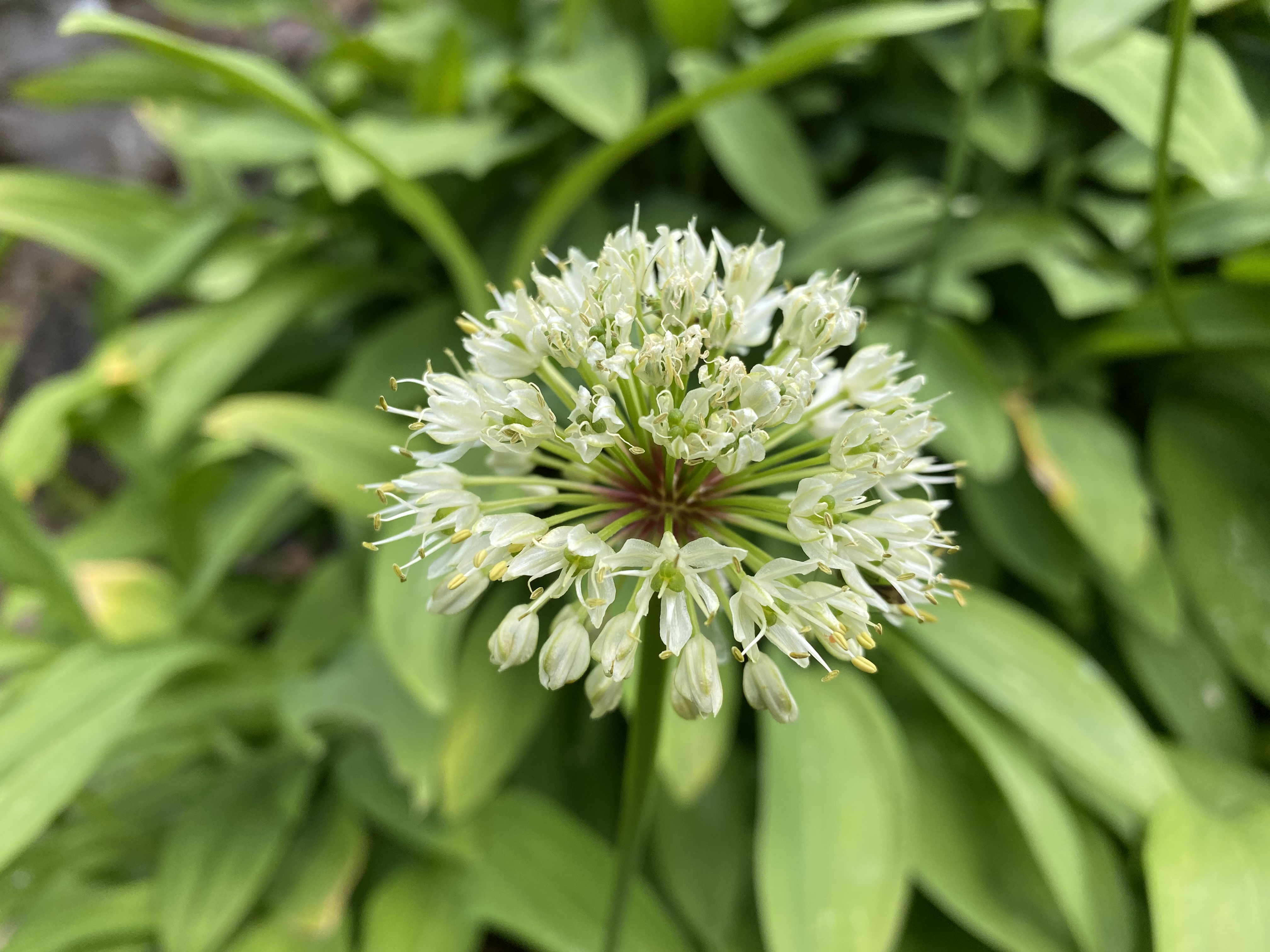Victory onion
(Allium victorialis)

Description
Allium victorialis, commonly known as victory onion, Alpine leek, and Alpine broad-leaf allium is a broad-leaved Eurasian species of wild onion. It is a perennial of the Amaryllis family that occurs widely in mountainous regions of Europe and parts of Asia (Caucasus and Himalayas). Some authors consider certain East Asian and Alaskan populations as constituting subspecies platyphyllum within the species Allium victorialis. Recent sources recognize this group as a distinct species, called Allium ochotense. Allium victorialis attains a height of 30–45 cm (11.8–17.7 in) and forms a sheathed bulb ("root-stalk") about the thickness of a finger and 5–8 cm (2.0–3.1 in) long. Leaves are broad elliptical or lanceolate. Flowers (perianths) are whitish green. Allium victorialis is found widely across mountain ranges Europe, as well as the Caucasus and the Himalayas. The specific epithet victorialis comes from the German Siegwurz (Root of Victory), and it earned this name having been "worn as an amulet, to be as safeguard against the attacks of certain impure spirits," by Bohemian miners among others. The plant, in past centuries in certain mountainous regions of Europe, "was cultivated as a medicinal and fetish plant". It was also recorded as consumed by Ainu people in northern Japan. Allium is a genus of monocotyledonous flowering plants that includes hundreds of species, including the cultivated onion, garlic, scallion, shallot, leek, and chives. The generic name Allium is the Latin word for garlic, and the type species for the genus is Allium sativum which means "cultivated garlic". Carl Linnaeus first described the genus Allium in 1753. Some sources refer to Greek ἀλέω (aleo, to avoid) by reason of the smell of garlic. Various Allium have been cultivated from the earliest times, and about a dozen species are economically important as crops, or garden vegetables, and an increasing number of species are important as ornamental plants. The decision to include a species in the genus Allium is taxonomically difficult, and species boundaries are unclear. Estimates of the number of species are as low as 260, and as high as 979. Allium species occur in temperate climates of the Northern Hemisphere, except for a few species occurring in Chile (such as A. juncifolium), Brazil (A. sellovianum), and tropical Africa (A. spathaceum). They vary in height between 5 cm and 150 cm. The flowers form an umbel at the top of a leafless stalk.
Taxonomic tree:







